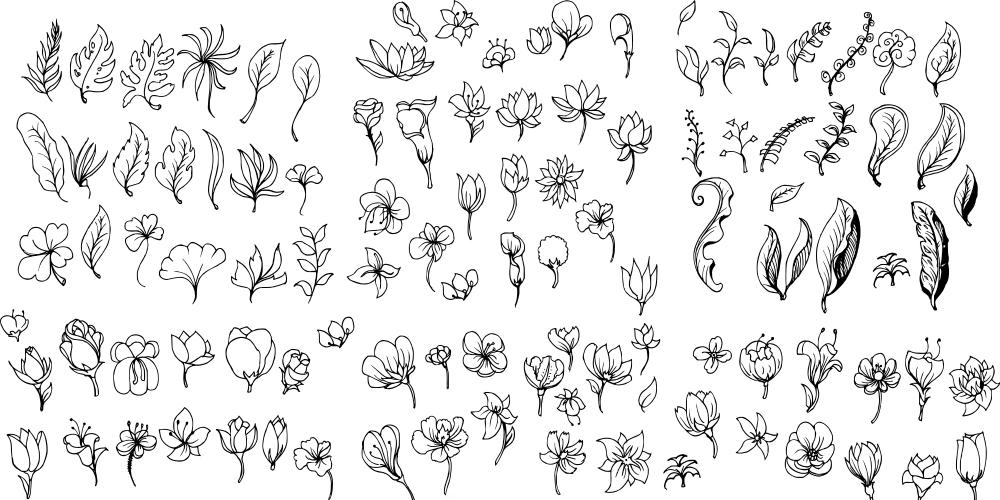
Sarah’s Health Notes: Feeling anxious? Get doodling…
Click through to a site called Medical News Today and you might not expect to find an article headed ‘What to know about anxiety and drawing’. Unless, that is, you are one of the many millions of people who’ve found that engaging in some form of art – and doodling is recommended as a starting point – helps them manage their emotions, cope with stress and learn to relax.
Whichever form of art you take up - drawing, painting, sculpting, clay modeling or doodling - it prompts the neurological system to calm down, and influences the levels of brain chemicals including dopamine. This neurotransmitter (chemical messenger) can be low in people suffering anxiety and depression. According to the American Art Therapy Association, because art therapy increases dopamine, it helps people feel happier and more balanced.
Research also shows that sketching, for instance, helps your brain get in the state of consciousness called ‘flow’ or ‘being in the zone’, where you may seem to enter another dimension – it’s similar to meditating or mindfulness. Problems seem to melt away for that time and it can be deeply restful. Research shows that it helps patients with diseases including cancer.
Art therapy can help people who find it difficult to express their feelings in words to get in touch with their emotions. This can be a positive way to help children through trauma, for instance.
For Debs Teale, 53, drawing proved the catalyst to transform her life. In 2010, after decades on prescribed drugs, including antipsychotics, antidepressants and sleeping pills, the mother of three tried to commit suicide. As part of her discharge plan she was referred to a psychologist. ‘In the waiting room I saw a leaflet called Creative Minds: Art of Wellbeing. I didn't know anything about art and couldn’t draw at all but something made me take it. The psychologist was happy for me to try.’
‘A few days later my friend drove me to a taster session near my house. It was so daunting when I walked in that I was about to run out when a man called over from the far side of the room, asking me to join them. I sat on the seat nearest the door in case I needed to escape but I stayed for the session and, step-by-step with the tutor, I drew a thistle.’
‘I can say now that 6th December 2011 was the day my life changed. Something inside me came alive and I really enjoyed it. It made me feel good and it also allowed my brain to stop. I took my thistle home to show my daughters and they were so amazed I’d drawn it they made me draw it again to prove I’d really done it, not the tutor. The key thing about going to these classes was that they were not about my illness but my wellness. That had never happened in my life.’
Within two months of starting drawing, Debs was able to stop taking sleeping tablets. ‘I used to draw instead to stop my mind racing, and that allowed me to sleep. So I began to wonder if I could off some of the other drugs as drawing and painting allowed me to control my illness and my thoughts, rather than them controlling me. Over a year, in consultation with the psychologist, I very slowly came off all the pills.’
Doodling is an easy way to start. There’s no wrong or right way to doodle: just pick up a pencil and let it do the drawing, rather than you directing it. You could try patterns – stripes or swirls, say – or shapes like stars or circles: I always used to doodle heart shaped leaves – make of that what you will.
So keep a little pad and pencil with you and if/when you get down, get doodling!
Debs Taylor is a supporter of the Beyond Pills Campaign, which aims to replace unnecessary and/or harmful drugs with social prescribing, referring people to activities such as art therapy.
DISCLAIMER: The views, opinions and information expressed in this article and on Victoriahealth.com Ltd are those of the author(s) in an editorial context. Victoriahealth.com Ltd cannot be held responsible for any errors or for any consequences arising from the use of the information contained in this editorial or anywhere else on the site. Every effort is made by the editorial and content team to see that no inaccurate or misleading information, opinion or statement appear, nor replace or constitute endorsement from medical bodies or trials unless specified. Victoriahealth.com Ltd accept no liability for the consequences of any inaccurate or misleading data, information, opinion or statement. Information on Victoriahealth.com Ltd and in the editorials is provided for informational purposes only and is not intended as a substitute for the advice provided by your physician or other healthcare professional. You should not use the information on this website or in the editorials for diagnosing or treating a health concern or disease, or for the replacement of prescription medication or other treatment.